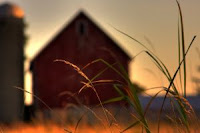 I’m not sure how I missed it, but there was an interesting article in the New York Times (that is why I missed it) on page A1 about Iowa’s vanishing barns. But, in reality the article is about more than that. It is about the size of today’s Iowa farms. It is about the young people who desire to farm but run into brick wall after brick wall. It is about the older generations who are now involved in the larger farms, but still see that there may be something wrong. In a nutshell it is kind of the same thing about large farms vs. small farms that I have written about before on this blog. But, since I have been blasted a time or two for writing those things I’ll just leave you with some interesting quotes from the article … including quotes from regular ol’ Iowans.
I’m not sure how I missed it, but there was an interesting article in the New York Times (that is why I missed it) on page A1 about Iowa’s vanishing barns. But, in reality the article is about more than that. It is about the size of today’s Iowa farms. It is about the young people who desire to farm but run into brick wall after brick wall. It is about the older generations who are now involved in the larger farms, but still see that there may be something wrong. In a nutshell it is kind of the same thing about large farms vs. small farms that I have written about before on this blog. But, since I have been blasted a time or two for writing those things I’ll just leave you with some interesting quotes from the article … including quotes from regular ol’ Iowans.
- “What had in the 1930s been an ordinary farm here — 80 or 160 acres and a few cows and sheep and chickens — is today far bigger and more specialized to pay for air-conditioned, G.P.S.-equipped combines and tractors, so much fuel and the now-skyrocketing price of farmland.”
- “All of that has left some of Iowa’s youngest, newest farmers doubtful that one could make a start in farming anymore without roots and connections and land dating back, say, to the W.P.A. era.”
- ““We just don’t neighbor like we used to,” said Donald Wedeking, 81, of Nemaha (A “Mighty Small Town,” as its sign somewhat ambiguously promises), who grows 830 acres of corn and soybeans with his son, far more than his family once did.”
- “These days, a farmer’s land can stretch into thousands of acres. When the W.P.A.’s writers came through, they wrote that Iowa had 221,986 separate farms on land totaling more than 34 million acres. Today, on only a little less land (31.5 million acres), Iowa has just 88,400 farms. More than half the farmland is owned by people 65 years old or older, an Iowa State University farm economist says, and about half of that is owned by those 75 or older.”
- “But the notion that young people, lured by big cities, have left purely by choice is not always so. On a gravel road near Albert City, a machine — some surreal cross between a spaceship and a gargantuan Transformers toy — suddenly appears in the distance. Cars pull over to make room. It stands 19 feet off the ground, its gaping boom, full of insecticide to battle the aphids in soybean plants, jutting out 90 feet. This sprayer ($168,000, used) is the latest tool in the kit of Josh Bellcock, 31, who farms 3,000 acres with family members. Without his family land and his longstanding ties to older farmers who live here (and from whom he rents land) Mr. Bellcock says he probably could not succeed as a young farmer starting out. Not now.”
- ““I’m pretty lucky,” Mr. Bellcock said. “People aren’t willing, unless it’s a family member, to go out of their way to help someone else.””


I really resonate with this post. My wife and I are working to establish a small Iowa farm that can be passed on to our children. We have our start now! The biggest obstacle is acquiring land, debt free. That’s the goal for the next 10 years.
Hi! I’m glad to find your blog. This is very interesting stuff. As I work at Steiner Tractor, I found your blog on Technorati when I was looking for some other tractor blogs. I lived in Dubuque for 2 years and attended UD. I really loved it in Iowa, but it was strange to me how HUGE the farms were. I guess at the time, I just thought that was a part of Iowa, I thought it was because there was SO MUCH farm land. Your article really opened my eyes. I’ll keep checking in on your small farm experience!
Thanks for checking out the blog steiner tractor! Farms really can be pretty big in Iowa. For example there is a guy that farms a lot of the ground around our house and I believe he does a bit of 6,000 acres!
Mike W. :: I’m with you on acquiring land debt free. Although we aren’t doing that we are keeping our debt to a minimum as we get our feet wet farming and paying it off as quickly as possible.